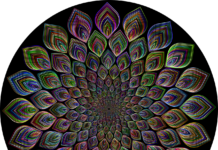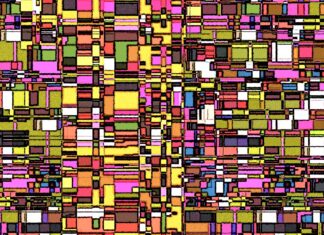Stable Diffusion, an innovative concept in the realm of machine learning and generative modeling, represents a groundbreaking advancement in the field. In this comprehensive exploration, we embark on a journey to understand the essence of Stable Diffusion, its mathematical underpinnings, and its transformative impact on the world of artificial intelligence.
At its core, Stable Diffusion is a novel training framework that addresses key challenges in generative modeling, particularly in the realm of image synthesis and data generation. Developed as a response to the limitations of traditional generative models, Stable Diffusion introduces a paradigm shift that empowers machine learning models to generate high-quality, diverse, and realistic data.
Generative modeling is a fundamental concept in machine learning where models are trained to generate data that resembles a given distribution. These models have a wide range of applications, from creating realistic images and videos to generating text and even simulating biological processes. However, traditional generative models have faced significant hurdles, particularly in producing high-quality and diverse data.
One of the primary limitations of traditional generative models, such as Generative Adversarial Networks (GANs) and Variational Autoencoders (VAEs), is the challenge of mode collapse. Mode collapse occurs when a generative model focuses on a limited subset of the target distribution, resulting in the generation of similar and repetitive samples. This limitation has hindered the ability to produce diverse and realistic data.
Stable Diffusion emerges as a solution to this mode collapse problem. It introduces a novel training framework that promotes stability during the training process. This stability is achieved by controlling the rate at which the model explores the data distribution and adjusting the learning rate dynamically. As a result, Stable Diffusion enables generative models to explore and capture the entire distribution, producing diverse and high-quality samples.
The mathematical foundation of Stable Diffusion draws from probability theory, stochastic processes, and gradient-based optimization. Central to this framework is the notion of diffusion, a process that models how particles disperse in a medium over time. In the context of generative modeling, diffusion refers to the process of generating data by gradually transforming a simple initial distribution into the desired target distribution.
A key element of Stable Diffusion is the diffusion process, which consists of a series of T time steps. At each time step, the data is transformed in a controlled manner, gradually approaching the target distribution. The diffusion process is guided by a temperature parameter that regulates the rate of transformation. Lower temperatures lead to slower transformations, while higher temperatures result in faster changes.
The key insight of Stable Diffusion is to leverage the Fokker-Planck equation, a fundamental equation in probability theory that describes the evolution of a probability density function over time. By incorporating this equation into the training process, Stable Diffusion enables generative models to learn the optimal transformations that bridge the gap between the initial distribution and the target distribution.
The dynamic adjustment of the temperature parameter is a critical component of Stable Diffusion. This adjustment is achieved through a stochastic process known as Langevin dynamics, which introduces noise into the model’s training. The noise serves as a source of randomness that guides the exploration of the data distribution. By adaptively controlling the noise level, Stable Diffusion ensures that the model explores the data distribution at an appropriate pace, preventing mode collapse.
Stable Diffusion has garnered significant attention and acclaim in the machine learning community for its ability to produce remarkable results in various applications. It has been applied to image generation, super-resolution, text-to-image synthesis, and more. In each of these domains, Stable Diffusion has demonstrated its capacity to generate data that is not only diverse but also of high quality, rivaling the realism of human-generated content.
One of the notable applications of Stable Diffusion is in the field of image synthesis. Traditional generative models often struggle to produce high-resolution and realistic images, especially when it comes to generating fine details. Stable Diffusion has shown exceptional prowess in addressing this challenge. It has been used to generate stunningly realistic images that exhibit intricate details, sharp textures, and vivid colors.
Super-resolution, the process of upscaling low-resolution images to higher resolutions, is another domain where Stable Diffusion has made significant contributions. By training generative models using the Stable Diffusion framework, researchers have been able to enhance the quality and sharpness of images, opening new possibilities in fields such as medical imaging, satellite imagery, and digital photography.
Text-to-image synthesis, a task that involves generating images from textual descriptions, has also witnessed the transformative impact of Stable Diffusion. This technology enables the creation of visual content based on natural language descriptions, offering potential applications in content generation, advertising, and creative design.
The success of Stable Diffusion extends beyond the realm of image synthesis. It has been applied to various data generation tasks, including audio synthesis and data augmentation. In the domain of audio synthesis, Stable Diffusion has been used to create realistic sounds and music, paving the way for applications in music production, virtual reality, and gaming.
Data augmentation, a technique used to increase the diversity of training data for machine learning models, has benefited from Stable Diffusion as well. By generating synthetic data that closely resembles real data, Stable Diffusion has enhanced the performance of machine learning models in tasks such as image classification and natural language processing.
The impact of Stable Diffusion on the machine learning community is profound, as it addresses critical challenges in generative modeling and data generation. Its ability to produce diverse and realistic data has broad implications across industries, from entertainment and creative arts to healthcare and scientific research.
In conclusion, Stable Diffusion represents a remarkable advancement in the field of machine learning and generative modeling. Its innovative training framework, rooted in the principles of diffusion and stochastic processes, has overcome the limitations of traditional generative models, opening new frontiers in data generation and synthesis. Stable Diffusion’s impact is felt across diverse applications, reshaping the landscape of artificial intelligence and empowering models to create data that is not only realistic but also richly diverse and captivating.
Mode Collapse Mitigation:
Stable Diffusion addresses the mode collapse problem commonly encountered in generative modeling, enabling models to explore and capture the entire data distribution.
Dynamic Temperature Control:
The framework employs dynamic temperature adjustment, regulating the rate of data transformation during training to prevent over-exploration or stagnation.
Mathematical Foundation:
Stable Diffusion is grounded in probability theory, stochastic processes, and the Fokker-Planck equation, providing a robust mathematical basis for generative modeling.
Diffusion Process:
The concept of diffusion is central, describing the gradual transformation of data from an initial distribution to the target distribution over a series of time steps.
Langevin Dynamics:
Stochastic Langevin dynamics introduce controlled noise into the training process, guiding the exploration of the data distribution.
High-Quality Image Generation:
Stable Diffusion excels in generating high-resolution, realistic images with intricate details, surpassing the capabilities of traditional generative models.
Super-Resolution:
It has been successfully applied to super-resolution tasks, enhancing image quality and sharpness, particularly in fields like medical imaging and satellite imagery.
Text-to-Image Synthesis:
Stable Diffusion enables the generation of images from textual descriptions, finding applications in content generation and creative design.
Audio Synthesis:
The framework extends to audio synthesis, producing realistic sounds and music, with potential applications in music production and immersive experiences.
Data Augmentation:
Stable Diffusion contributes to data augmentation by generating synthetic data that enhances the diversity of training datasets, benefiting machine learning tasks like image classification and natural language processing.
Stable Diffusion, a pioneering concept in the domain of machine learning and generative modeling, represents a captivating fusion of art and science. Beyond its formidable technical prowess, it stands as a testament to human ingenuity, pushing the boundaries of what machines can achieve in the realm of creativity and data synthesis.
At its heart, Stable Diffusion is a manifestation of our quest to understand and replicate the intricate patterns and beauty found in the world around us. It’s a journey into the depths of probability theory and mathematical elegance, guided by a profound appreciation for the aesthetics of data.
In the vast landscape of machine learning, Stable Diffusion emerges as an artist’s toolkit, a palette of probabilities and gradients that can conjure images that rival the works of human creators. It holds the potential to revolutionize not only how we generate data but also how we perceive and interact with the digital world.
The allure of Stable Diffusion lies in its ability to harness randomness and structure it into meaningful forms. It embodies the notion that within the chaos of stochastic processes, there exists an order waiting to be unveiled. This order, when unveiled, manifests as art—images, sounds, and even text—that captivates our senses and resonates with our emotions.
In the world of art, the concept of Stable Diffusion finds a kindred spirit. Artists have long explored the interplay of randomness and structure in their creations. From abstract expressionism to algorithmic art, the idea that beauty can emerge from the interplay of chance and design has fueled creative endeavors throughout history.
Stable Diffusion takes this artistic exploration to new heights. It offers a canvas where the strokes are not painted but generated by complex algorithms. The colors are not mixed on a palette but emerge from the depths of probability distributions. The resulting images are not captured through a lens but born from the interplay of mathematical elegance and computational power.
It’s not uncommon to find Stable Diffusion at the intersection of art and technology, where the boundaries between human creativity and machine intelligence blur. Artists and technologists alike have embraced the possibilities it offers, using it to create digital artworks that challenge our perceptions and redefine the boundaries of what is possible.
In music, Stable Diffusion serves as a symphony of randomness and harmony. It is reminiscent of avant-garde compositions where chance operations and structured arrangements converge to create sonic landscapes that defy conventional categorization. The algorithms that underpin Stable Diffusion can generate music that is both unpredictable and captivating, pushing the boundaries of what we consider musical.
Imagine listening to a piece of music where the notes and melodies are not composed by a human hand but emerge from the intricate dance of mathematical processes. The result is a sonic experience that is both novel and deeply resonant, a testament to the creative potential of machine learning.
In the world of literature and storytelling, Stable Diffusion sparks the imagination. It can generate text that blurs the lines between human and machine authorship, producing stories and narratives that are both intriguing and unpredictable. It opens doors to interactive storytelling experiences where readers can influence the direction of a narrative, creating a dynamic and immersive form of storytelling.
Imagine reading a novel where the plot twists and character developments are not scripted by an author but evolve in response to your choices and interactions. The story becomes a collaborative journey between the reader and the machine, a literary adventure where the boundaries of authorship and creativity are redefined.
Beyond the realms of art and entertainment, Stable Diffusion holds promise in fields as diverse as scientific research and healthcare. It can generate synthetic data that mimics real-world phenomena, enabling researchers to explore and validate hypotheses in controlled environments. In healthcare, it can aid in the creation of realistic medical simulations and training scenarios, improving the skills of healthcare professionals and ultimately enhancing patient care.
Stable Diffusion is a testament to the power of human ingenuity and the potential of machines to transcend their traditional roles as tools and become partners in the creative process. It reminds us that creativity knows no bounds, that artistry can emerge from the most unexpected places, and that the intersection of technology and human imagination is a realm of infinite possibilities.
In conclusion, Stable Diffusion is more than a technical framework; it is a gateway to a new frontier of creativity and exploration. It challenges our preconceptions about art, music, literature, and the boundaries of human and machine collaboration. It invites us to embrace randomness as a source of inspiration and to celebrate the harmonious interplay of chance and design. It is a reminder that in the ever-evolving landscape of technology and creativity, the most profound discoveries often emerge from the synthesis of human and machine intelligence.






















